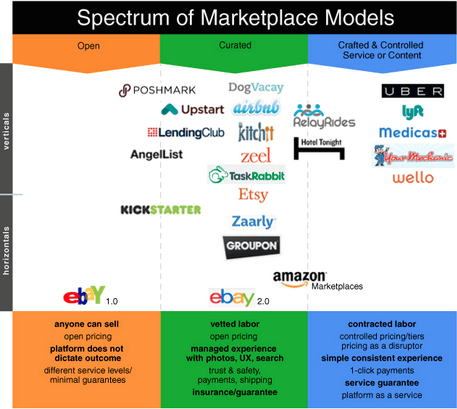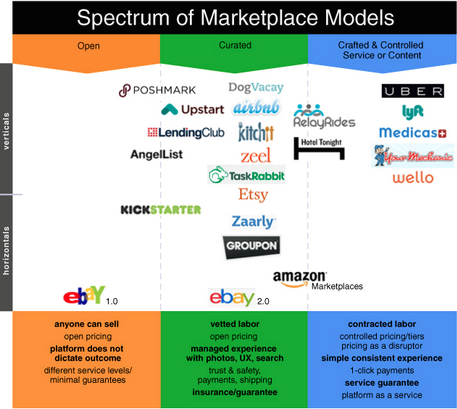In a recent article for TechCrunch, Sam Madden (@SamMaddens) discusses the functionality of different types of marketplaces and the economics behind their declines and peaks.



In a recent article for TechCrunch, Sam Madden (@SamMaddens) discusses the functionality of different types of marketplaces and the economics behind their declines and peaks.




In a recent article for TechCrunch, Sam Madden (@SamMaddens) discusses the functionality of different types of marketplaces and the economics behind their declines and peaks.
Marketplaces have been around since 1883 when the Yellow Pages gave homeowners an easy way to find businesses in their area. When Craigslist evolved in the 1990s, we saw the first clear marketplace model and ever since, investment money has been flowing into the service space through many different industries. Regardless of the variety of platforms, Madden has identified patterns in their behavior and their tendencies to rise and fall.
Liquidity Marketplaces
This traditional marketplace model includes platforms like Yelp, Angie’s List, and Groupon, which collectively raised almost $1.5 billion in venture funding from 2004-2011. Since these industries had low barriers to entry, similar sites popped up everywhere -- as a result of the increased competition and popularity of the platform model, clients were able to have more search and discovery options, and pros were given more marketing and advertising options. However, after a few quarters of performance, valuations declined from peak to trough and new types of models started grabbing market share.
Verticalized and Lead Gen Marketplaces
These types of marketplaces incorporated innovations in the user experience of discovery. VC money poured in very quickly with companies like Porch raising $65 million and Thumbtack raising $100 million. Google eventually announced its goal to optimize local search, just like Thumbtack’s model, evolving the model into one which displayed profiles of local service pros. This along with the progressing liquidity marketplace brought the creation of on-demand marketplaces.
On-Demand Marketplaces
We know all about on-demand marketplaces here at Near Me. This model gave the client a better user experience while allowing the platform to charge transaction fees. Though companies like Homejoy that followed this model succeeded at first, the market didn’t react as successfully as expected. TaskRabbit had to lay off a large amount of employees, still trying to hone in on the right pricing model. Homejoy officially shut down last month due to violations of labor laws, and Handy is rumored to be on its downfall.
Low technology barriers have proven to be a major downfall for service based marketplaces, but the other major issue is perpetual platform leakage. Though these platforms have value, in that they make the initial introduction between client and pro (which are typically recurring whether on a schedule or ad hoc) the issue is that this relationship between client and pro typically goes offline meaning clients won’t need to use the platform to access their pro. As a result, the decline from peak to trough is getting sharper with time and the marginal utility curve is flattening out.
Ensure your project’s success with the power of platformOS.